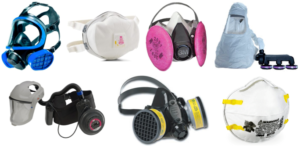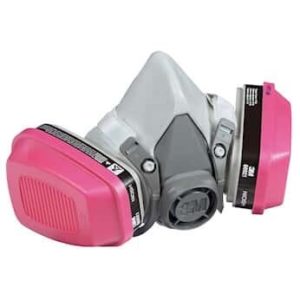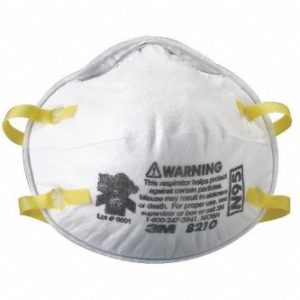September Safety Tip
Respirator Usage
It is an employer’s responsibility to determine what job duties throughout the facility pose respiratory hazards to employees during routine operations (Hazard Assessment). These hazards include dust, particulates, gases and vapors, and in some cases represent Immediately Dangerous to Life or Health (IDLH) conditions. The employer must ensure that all company employees are protected from these exposures.
Before considering the use of respirators, keep in mind that you must first implement, where feasible, engineering, work practice and administrative controls as the means to prevent or reduce exposures, and only look at respiratory protection as a last line of defense when exposures cannot be eliminated or substantially reduced in frequency and duration by using these other methods.
Engineering controls, such as ventilation and substitution of less toxic materials, are the first line of defense; however, engineering controls have not always been feasible for some of our operations, or have not always completely controlled the identified hazards. In these situations, respirators and other protective equipment must be used. Respirators are also needed to protect employees’ health during emergencies. The employer shall identify the work processes that require the use of a respirator.
In addition, some employees may express a desire to wear respirators during certain operations that do not require respiratory protection. As a general policy employers should review each of these requests on a case-by-case basis. If the use of respiratory protection in a specific case will not jeopardize the health or safety of the worker(s), employers should consider providing respirators for voluntary use. Voluntary respirator use is subject to certain OSHA requirements.
All respiratory protective equipment must be approved by the National Institute for Occupational Safety and Health (NIOSH) for the configuration and environment in which it is going to be used.
When the use of a respirator is not required by a substance-specific OSHA standard, the OSH Act or company policies and the employer has determined that its use is not necessary to protect the health of the employee, an employee may still request to use a respirator voluntarily.
Employees using respirators voluntarily will be provided with the information in Appendix D to 29 CFR 1910.134 . If they are using a respirator other than a filtering facepiece respirator (dust mask), they will also be provided initial medical clearance, fit testing and required to clean, store, and maintain the respirator as per the requirements of the OSHA standard. Employees who choose to voluntarily use respirators other than filtering facepieces or dust masks, should advise their supervisor of the need to be included in the applicable sections of the respirator program. If approved, the employees using a respirator other than a filtering facepiece respirator are required to attend annual training provided to those in the full respirator program, as 29 CFR 1910.134(k)(1)(v) requires training in the procedures for cleaning, maintenance and storage of the respirator. If employees voluntarily using respirators are aware of a change that warrants review of medical clearance or repeat fit testing, they should bring that to the attention of their supervisor.
Employees who are either required to wear respirators, or who choose to wear respirators voluntarily, must pass a medical exam before being permitted to wear a respirator on the job. Employees are not permitted to wear respirators until a health care professional has determined that they are medically able to do so. Any employee refusing the medical evaluation will not be allowed to work in an area requiring respirator use.
A half face respirator such as the one shown here potentially can be worn voluntarily per employer permission after medical evaluation, fit testing, training on care, maintenance and storage. Included in the respiratory protection program and must be retrained, fit tested annually.
If an N95 Filtering facepiece respirator (disposable type shown below) is required, the employee would also need a medical evaluation, fit testing, and training on procedures for care and maintenance and disposal.
If this type of respirator is used only voluntarily, the employee must sign off on Appendix D acknowledging the limitations, use, how to properly
Note: if used to control infectious disease such as in a pandemic, the N95 should NOT have an exhalation valve.
Contact your WCTI Loss Control Consultant for assistance if needed when assessing your respirator usage and requirements.
Source: OSHA.gov



